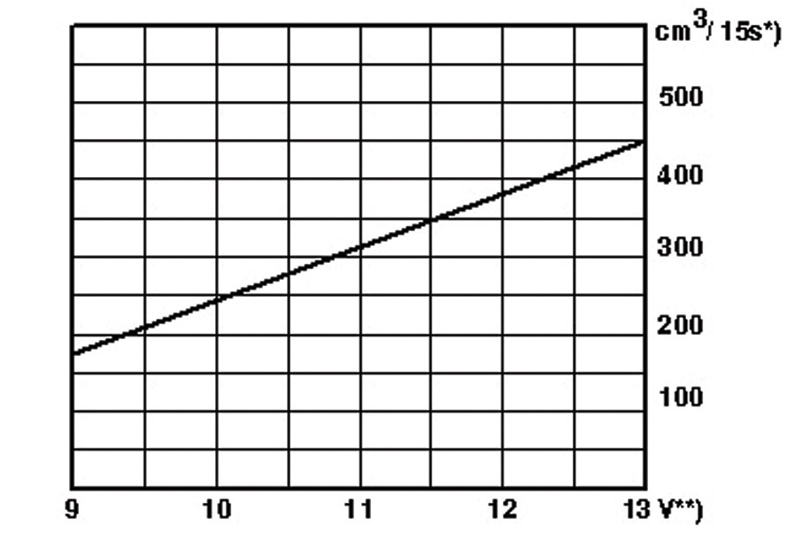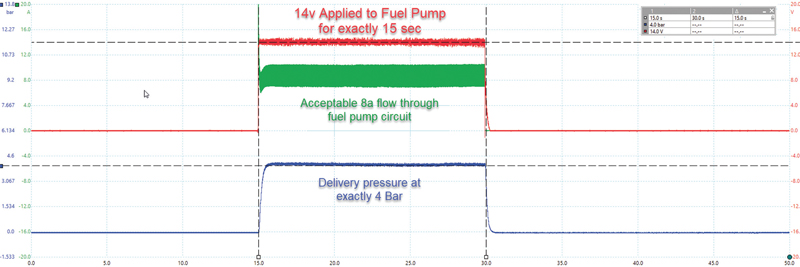
Scantec’s Ross Kemp is on the case to solve an ongoing problem concerning an Audi A4 FSi frequently losing power, with the engine even cutting out completely at times.
Recently, a customer brought into us a slightly ageing, but much loved, Audi A4 FSi. The owner reported symptoms of intermittent but frequent engine malfunction warning lamp with subsequent loss of power and, on occasion, the engine cutting out.
Unusually, this job was accompanied by a very long and detailed letter from the owner outlining the history of the problem over the last 12 months. Detailed attempts to rectify this issue included multiple fuel filters, fuel system flushing, replacement throttle pedal, spark plugs and they had even had the engine control module sent away for bench testing.
Investigating the fuel pressure
As with the beginning of every diagnostic assessment, we started with a full systems fault scan and visual inspection. Initial diagnostic results showed a generic non-cylinder specific misfire fault code (16698) and a fuel pressure regulation fault (17428). Visual inspection also confirmed a non-genuine fuel filter.
Knowing that any possible fuel pressure issue could alter the cylinder’s air/fuel ratio (therefore affecting combustibility and having the potential to cause a misfire), we decided to investigate the fuel system first.
Initial checks via live data confirmed the high-pressure fuel system’s demanded and actual pressures matched. Cracking out the low-pressure fuel gauges and being conscious of the non-OE fuel filter, we checked the fuel supply pressures before and after the fuel filter. This confirmed that not only was the pressure delivered from the in-tank electric fuel pump within specification but there was almost no drop in pressure across the fuel filter.
So far so good, however as it stands all the testing has taken place in the workshop and as such we really haven’t put the engine under any real load. As we still suspected a fuel pressure and/or delivery issue we opted next for a really quick but effective test.
Checking the O2 sensors
We initially monitored both O2 sensors’ operation (in the workshop) to confirm both sensors were operational and correct and could therefore be relied upon to report the actual fuelling state of the engine. We proceeded with monitoring those sensors whilst driving the vehicle and within seconds we noted that when demanding full throttle, both sensors switched lean, confirming as suspected that we had a definite fuel delivery issue. Interestingly the fuel pressure appeared to still be within the required specification.
Our attention then turned to fuel delivery, as although we had already established the fuel pressure was correct, we were conscious of one of the owner’s statements: “in total [the vehicle] had four new fuel filters. Each time [it] seemed to help for a bit, then the issue would return”.
Luckily, being a German brand, not only did we have access to all OE documentation and data but the required information regarding fuel delivery was very well documented – this is something that is sadly missing with many other brands.
A quick check confirmed the following expected minimum delivery when the system was set to 4 Bar and run for 15 seconds:
Noting the different minimum delivery based on supply voltage we opted to support the battery at exactly 14v, our theory being we should more than exceed the minimum specifications for delivery.

Monitoring the pump
We removed the high-pressure pump’s (low pressure) supply line and attached a fuel pressure transducer and manual tap, ran the electric pump manually by feeding the pump’s supply fuse and slowly adjusted the tap until the system was running stably at a fixed 4 Bar. As we were already using the scope to monitor the fuel pressure and manually powering the supply pump, we also opted to monitor the current as that way we could also be sure the pump had a sufficient power and ground.
We then proceeded to run the pump for exactly 15 seconds at 14v and 4 Bar while monitoring current flow (pump integrity) and the all-important resulting delivery amount.
The results showed quite clearly that we had no electrical supply and/or pump integrity issues (as shown by the pump’s current draw), yet we barely achieved 250cm3 – being not far off half the expected delivery.
Solving the issue
As we had already confirmed no restriction across the fuel filter and then confirmed that even when manually powering the pump with a good supply voltage that the pump fails to deliver a sufficient fuel quantity, we clearly had an intake issue – this therefore warranted further labour time/investigation to gain access to the intake pump for further inspection.
On checking for workshop instructions to aid the removal of the in-tank pump, we found a link to a manufacturer TSB relating to “Poor Fuel Supply”. After checking further, we noticed references to wire gauze filter blockages caused by a known issue relating to the gauze and found that in early production, pumps were built with too fine a mesh and later pumps had therefore been modified to overcome these issues.
Removal of the fuel pump did in fact confirm the wire gauze filter on the pick-up assembly was partially blocked. Had we not had access to manufacturer information we may have cleaned and refitted this pump, however based on the TSB data we opted to supply and fit a new (modified) fuel pump assembly.
Confirming the solution
As with all in-house repairs, we re-ran the original test afterwards to confirm a delivery rate of over 500cm3. Following vehicle rebuild, a quick road test confirmed that on snap acceleration both O2 sensors instantly switched to a rich condition as expected with no loss of power experienced.
The job for me posed a question that I commonly consider in my role as a diagnostic technician and even after all these years, I still haven’t settled this in my mind – at what point in the diagnostic process should one check for TSBs?
Could I have sped the diagnostic process up on this particular job, had I looked for TSBs first? In this case I think the answer has to be no, as even if I had seen the TSB relating the blocked fuel pump gauze filters first, the labour time involved in removal and refitting for me would have dictated that I needed to justify that labour time to the customer and therefore would have still opted to confirm the delivery rate before taking that action. Also having the all-important before and after test results in my mind not only confirms (and evidentially backs up) the diagnosis but also the repair.
As with just about every diagnostic job we have done, it perfectly highlights our reliance on not only access to manufacturer data but, more importantly, the actual quality and quantity of the data available. This is one of the deciding factors that for us determines which brands we are prepared to cover for diagnostics and fault finding services.









